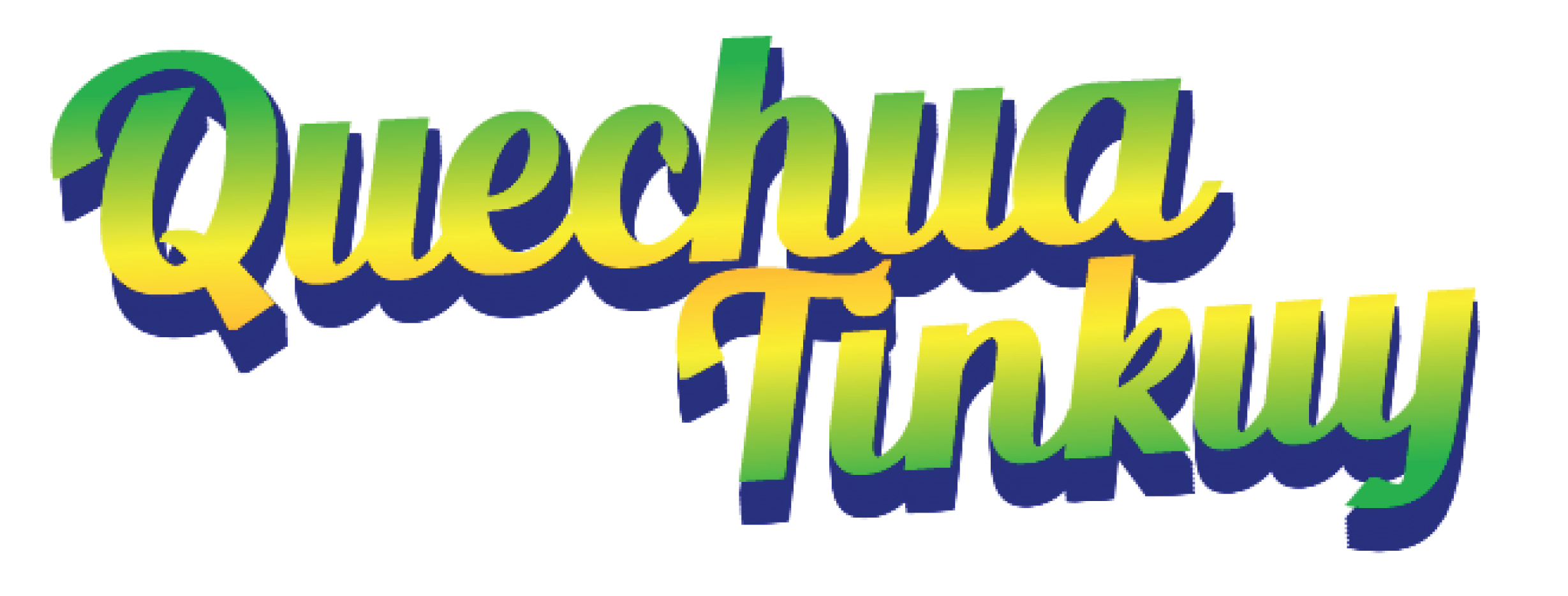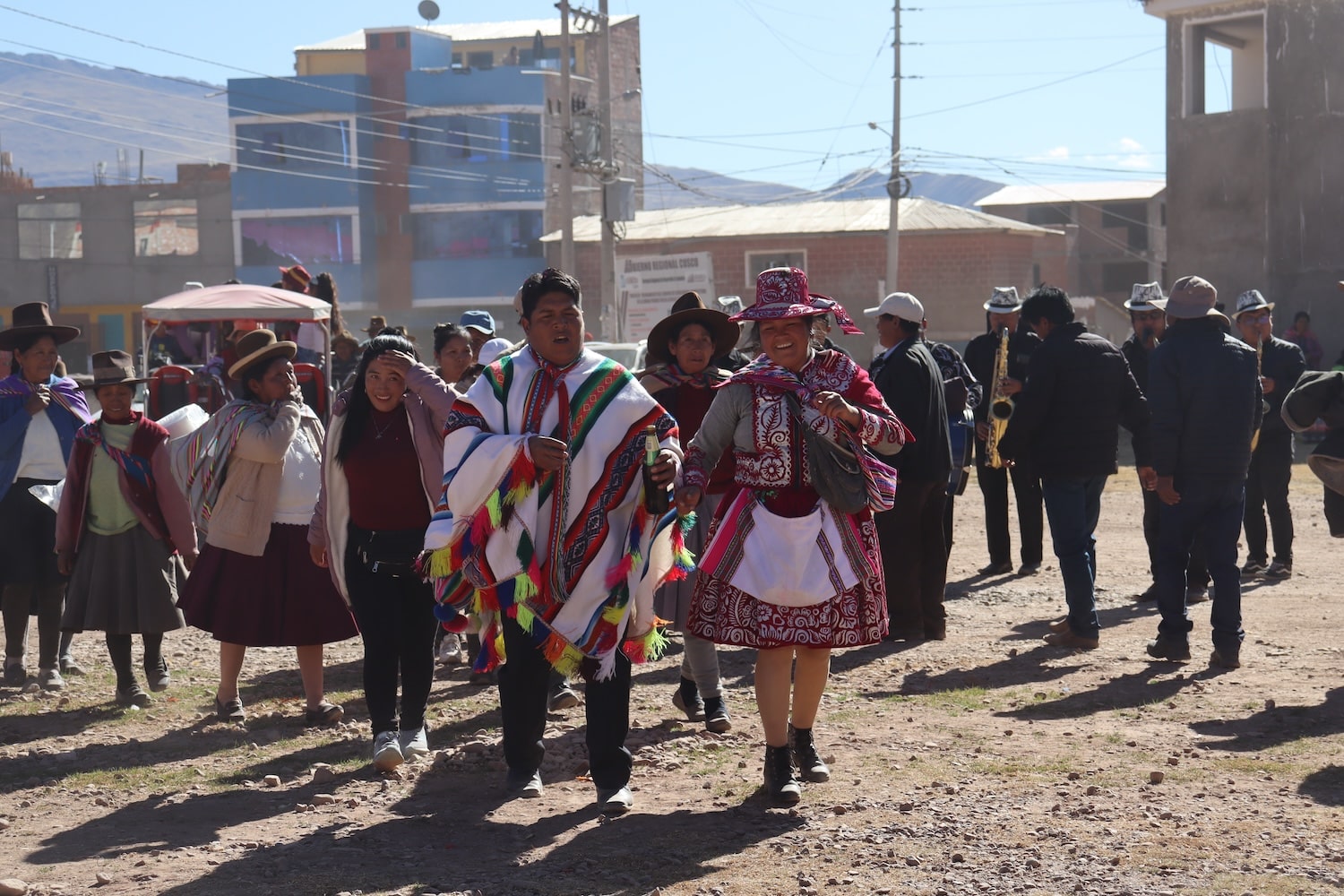
Qallarinapaq | Introduction
In this unit we will learn to create basic dialogues. Also, we will learn make basic descriptions of daily situations. For this, we will review the following points:
1. Basic questions in a conversation using interrogative forms.
2. The use of the accusative case that functions as the direct object of an expression. We will learn to use the suffix –ta.
Ready?
¡Qallarisun! / Let's get started!

Qillqa | Grammar
Grammar 1: Interrogative forms in a basic conversation
Let's review how to maintain and continue a basic conversation. To begin a conversation in Quechua we should use greetings in the interrogative.
The first interrogative to initiate a conversation is the following:
¿Allillanchu?
¿Are you well??
To which you should respond with:
Allillanmi
I am well
The second interrogative to initiate a conversation is the following:
¿Waliqllachu?
Are you well?
To which you should respond with:
¿Waliqllan?
I am well
The third interrogative is the following:
¿Hawkallachu?
¿Are you well??
To which you should respond with:
Hawkallan
I am well
For example, in a conversation between Eva and Noemí they ask and respond with the following:
| Noemí: ¿Allillanchu ñañáy? Eva: Allillanmi ñañáy | ¿Are you well, sister? I am well, sister |
| Noemí: ¿Hawkallachu ñañáy? Eva: Hawkallan ñañáy | ¿Are you well, sister? I am well, sister |
| Noemí: ¿Waliqllachu ñañáy? Eva: Waliqllan ñañáy | ¿Are you well, sister? I am well, sister |
Between two men these questions can be asked in the following way:
| Pablo: ¿Allillanchu wawqíy? Raúl: Allillanmi wawqíy | ¿Are you well brother? I am well, brother |
| Pablo: ¿Hawkallachu wawqíy? Raúl: Haywkallam wawqíy | ¿Are you well brother? I am well, brother |
| Pablo: ¿Waliqllachu wawqíy? Raúl: Waliqllam wawqíy | ¿Are you well brother? I am well, brother |
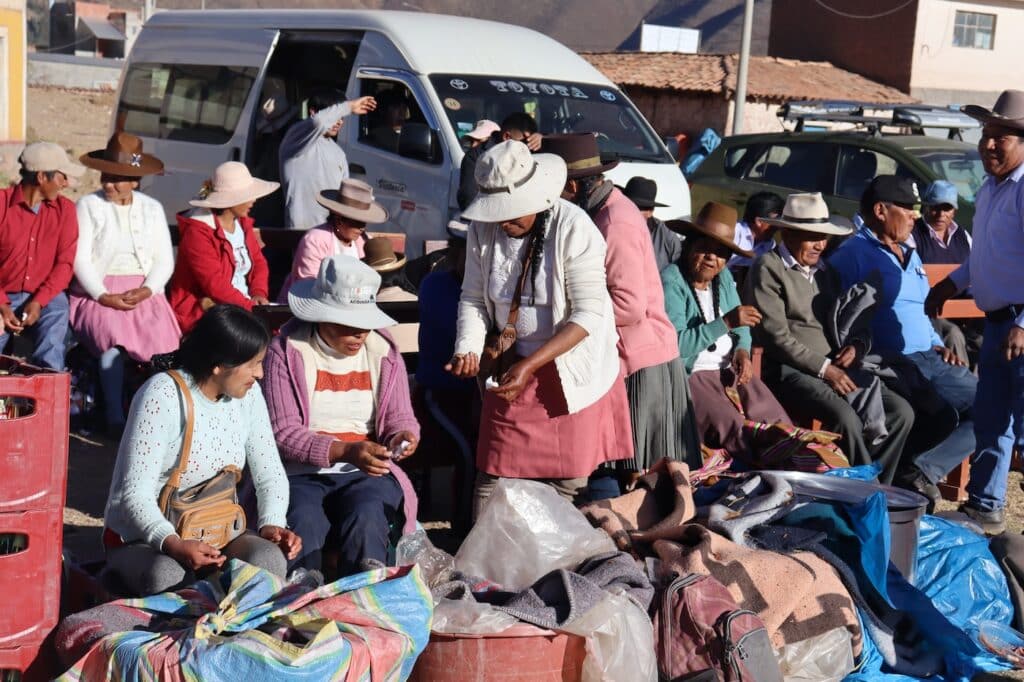
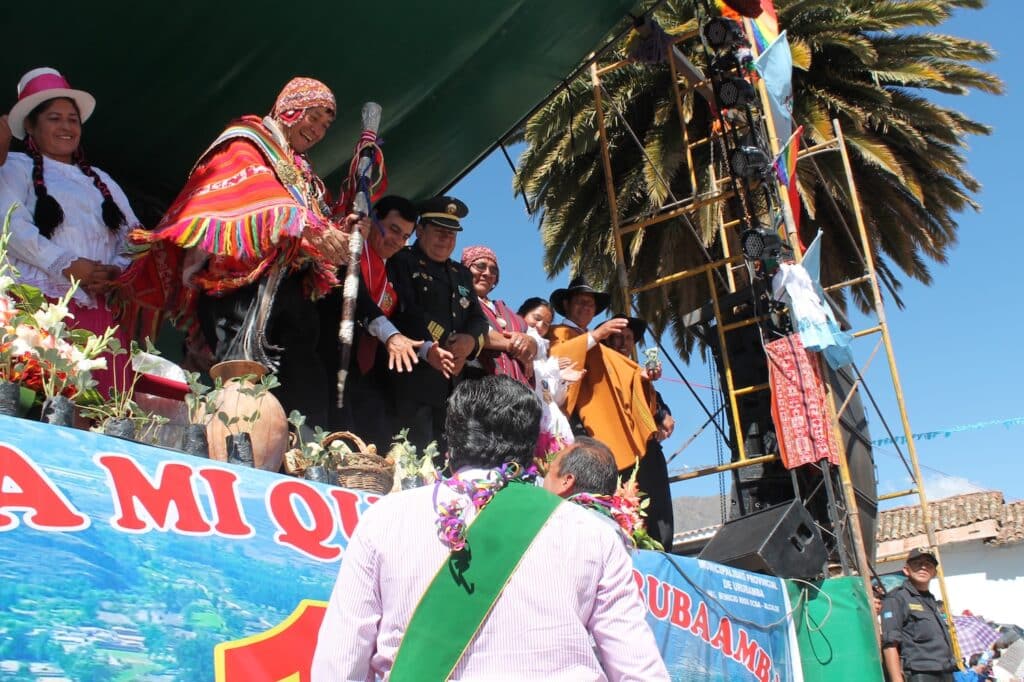
After these questions and their responses, the conversation can continue when either of the interlocutors ask the other person about their name or where they are from. In previous units, we have practiced these questions. Now we will review them.
For example, to know the name of a person you ask:
¿Imam sutiyki?
What is your name?
To which you can respond in the following way:
Karla sutiy
My name is Karla
To know where someone is from you ask:
¿Maymanta kanki?
Where are you from?
To which you can respond in the following way:
Sicuanimanta kani
I am from Sicuani
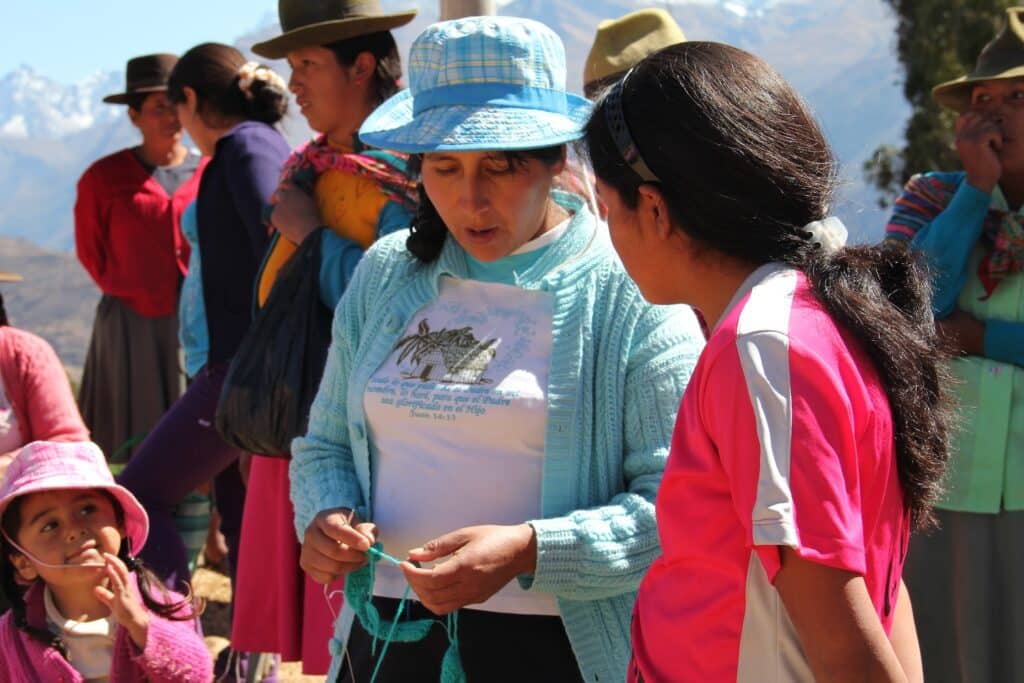
Grammar 2: The direct object in the sentences
In this unit we will also learn to use the accusative case – –ta. This is used when a noun in a sentences serves as the direct object (DO). Remember that the direct object receives the action of the verb. Because of this, the word that receives the accusative suffix is always a noun, not a verb.
To mark the direct object we should use the nominal suffix –ta which is the compliment of a transitive verb –ta.
Let's look at the following examples:
Aychata allqu mikushan
The dog is eating meat
To identify the direct object we can ask the question ¿Imata allqu mikushan? What is the dog eating? The response is Aychata, meat. It is in this word where we use the direct object marker.
Let's look at more examples:
| Lawata waykushani | I am cooking soup |
| Mayra allqukunata pukllachishan | Mayra is making the dogs play |
| Mamay kisuta mikushan wasipi | My mom is eating cheese in the house |
| Wawqiyta suyashani | I am waiting on my brother |
| Llaqtata rishani | I am going to the town |
| Qam papata allashanki | You are digging potatoes |
| Qhewar runakuna futbolta pukllanku | The people of Qquehuar play soccer |
| Curahuasikuna anista llamkanku | The Curahuasi people produce anise |
| Qhewarpi wakakunata uywanku | En Qquehuar they raise livestock |
| Curahuasi runakuna aqhata aqhanku | The Curahuasi people make chicha |
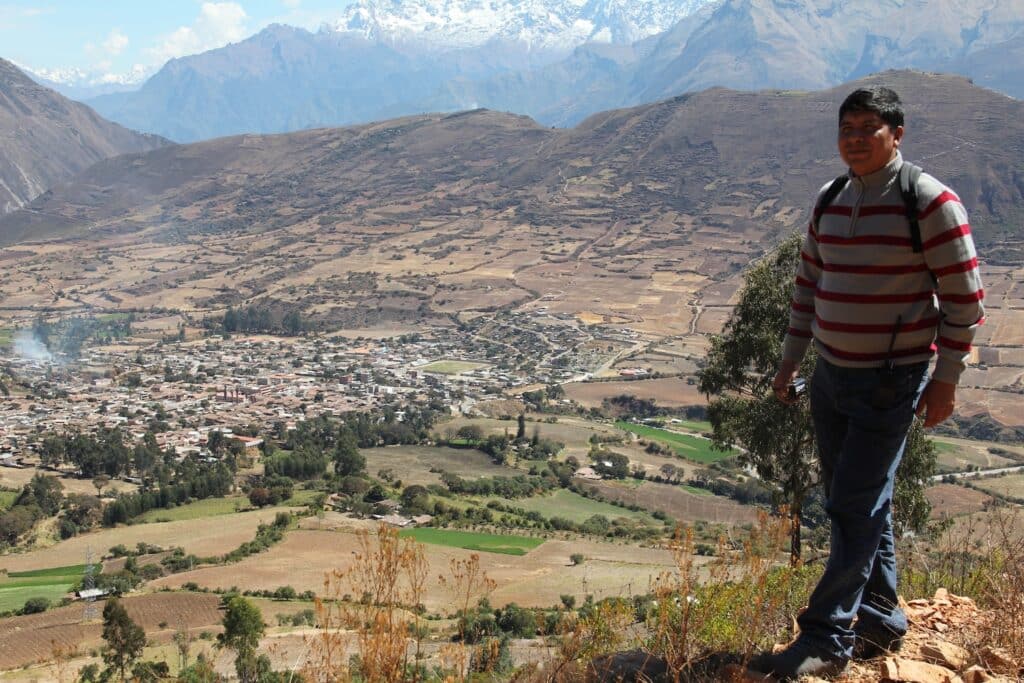
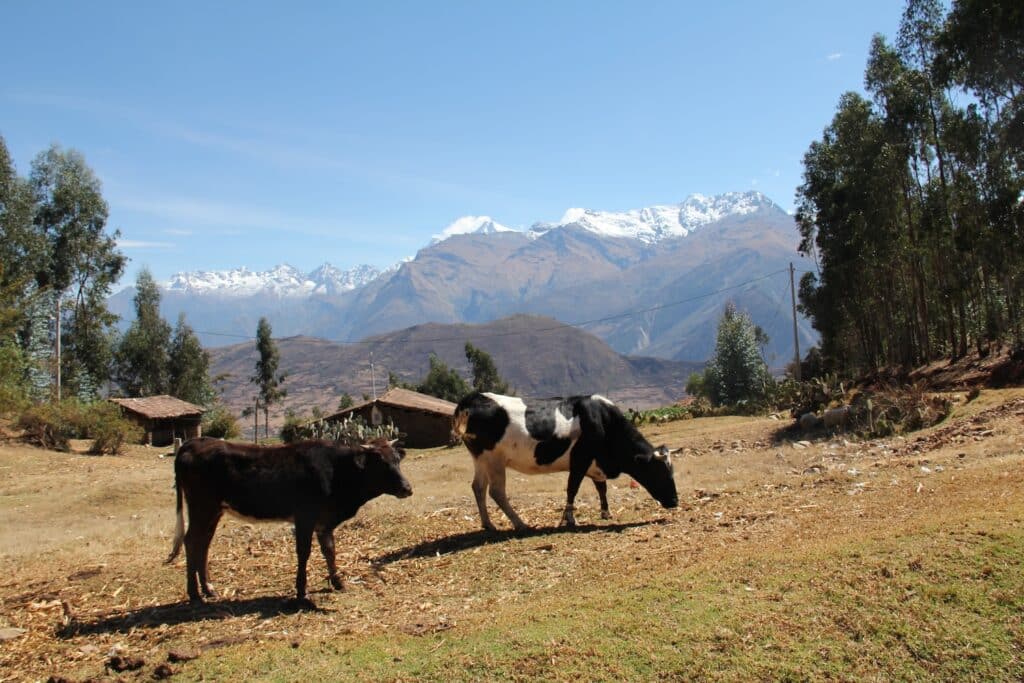

Rimanakuna | Vocabulary
| Ñañáy | My sister (of a woman) |
| Wawqíy | My brother (of a man) |
| Turáy | My brother (of a woman) |
| Suti | Name |
| Allqu | Dog |
| Kusa | Excellent |
| Allpa | Earth, land |
| Waka | Cow |
| Hatun Yachaywasi | University |
| Wasi | House |
| Qatiy | to spur animals |
| Apichu | sweet potato |
| Hurquy | to take out |
| Qhatuy | to sell |
| Paltay | avocado |
| Ruway | to do, to make |
| T’anta | Bread |
| Lisas | an Andean tuber |
| Rantiy | to buy |
| Lawa | Soup |
| Allqu | Dog |
| Pukllachiy | To make play |
| Kisu | Cheese |
| Suyay | To wait |
| Aqha | Corn Chicha |

Ruwapakuy | Exercises
Basic questions in a conversation.
Practice responding to each of the following questions by filling in the blanks:
¿Allillanchu?
Answer: ________________________
¿Waliqllachu?
Answer: ________________________
¿Hawkallachu?
Answer: ________________________
¿Imam sutiyki?
Answer: ________________________
¿Maymanta kanki?
Answer: ________________________
Use of the direct object.
Let's practice completing the following incomplete sentences with the direct object. Then to finish translate each sentence to Spanish or English.
Raulcha chakra ….. llank’ashan Curahuasipi
Translation: ________________________
Qam waka ….. michishanki
Translation: ________________________
Ana lisasta rantishan Abancaypi
Translation: ________________________
Nuqanchik t’anta …… ruwanchik Limapi
Translation: ________________________
Chay runakuna apichu …. wayk’ushanku
Translation: ________________________
Maria llamakuna …. qatin llaqtanpi
Translation: ________________________
Ana wakakuna……. michin Puca Pucapi
Translation: ________________________
Turay wasin……. ruwashan Maraspi
Translation: ________________________
Paykuna runasimi…… yachachishanku Hatun yachaywasipi.
Translation: ________________________
Wasiypi paltay…. qhatushayku
Translation: ________________________
Tiyuy allpa……. hurqushan
Translation: ________________________

Qawasunchik | Videos
Now watch these basic conversation videos with the use of the direct object.
Video 1: Basic conversations between Helen and Abel
Let's watch the following video about the use of interrogatives in a conversation.
Show Video Transcript: Helen and Abel
Mujer: ¿Allillanchu kashanki?
Varón: Allillanmi kashani panáy
Varón: Manan allinchu kashani
Varón: ¿Sumaqllachu kashanki?
Mujer: Sumaqlla kashani
Varón: ¿Sumaqllachu kashanki?
Mujer: Manan sumaqchu kashani
Varón: ¿Hawkallachu kashanki?
Mujer: Hawkallan kashani
Varón: ¿Hawkallachu kashanki?
Mujer: Manan hawkallachu kashani
Mujer: ¿Kusisqallachu kashanki?
Varón: kusisqallan kashani
Mujer: ¿Kusisqallachu kashanki?
Varón: Manan kusisqallachu kashani
Mujer: ¿Waliqllachu kashanki?
Varón: Waliqllan kashani
Mujer: ¿Waliqllachu kashanki?
Varón: Manan waliqllachu kashani
Video 2: Conversation between Eva and Noemí
Let's watch the following conversation videos between Noemí and Eva
Show Video Transcript: Eva and Noemí
Conversation #1 Eva and Noemí
Noemí: ¿Allillanchu ñañáy?
Eva: Allillanmi ñañáy
Noemí: Kusa ñañáy
Eva: ¿Iman sutiyki?
Noemí: Ñuqaq Noemí, ¿Iman sutiyki?
Eva: Eva
Conversation #2 Eva and Noemí
Noemí: ¿Hawkallachu ñañáy Eva?
Eva: Hawkallan ñañáy Noemí
Noemí: ¿Waliqllachu ñañáy Eva?
Eva: Waliqllan ñañáy Noemí
Conversation #3 Eva and Noemí
Noemí: ¿Allillanchu ñañáy?
Eva: Allillanmi ñañáy ¿qamrí?
Noemí: Allillanmi ñañáy ¿Iman sutiyki?
Eva: Eva suti, ¿Iman sutiyki ñañáy?
Noemí: Noemí sutiy, ¿Maymanta kanki ñañáy Eva?
Eva: Qusqumanta kani ñañáy Noemí, ¿qamrí?
Noemí: Punomanta kani ñañáy
Eva: Tupananchiskama ñañáy Noemí
Noemí: Tupananchiskama ñañáy Eva
Video 3: Use of the direct object
Let's watch the following video about the use of the direct object.
Show Video Transcript: Direct Object
Direct Object (Helen)
Curahuasi runakuna papata llamkanku
Curahuasikuna anista llamkanku
Curahuasi runakuna raymita ruwanku
Curahuasi runakunaqa aqhata aqhanku
Curahuasipi sarata llamkanku
Curahuasipi habasta llamkanku
Direct Object (Abel)
Qhewar runakuna futbolta pukllanku
Qhewarkuna carnavalta tusunku
Qhewar runakuna faenata ruwanku
Qhewar warmikuna misk’ita wayk’unku
Qhewarpi papata llamk’anku
Qhewarpi añuta llamk’anku
Qhewarpi warmikunata yanapachkani
Qhewarpi tarpuy uchuta mikuchkani
Qhewarpi voleyta pukllani
Qhewarpi wakakunata uywanku
Qhewarpi achka uwihakunata uywani
